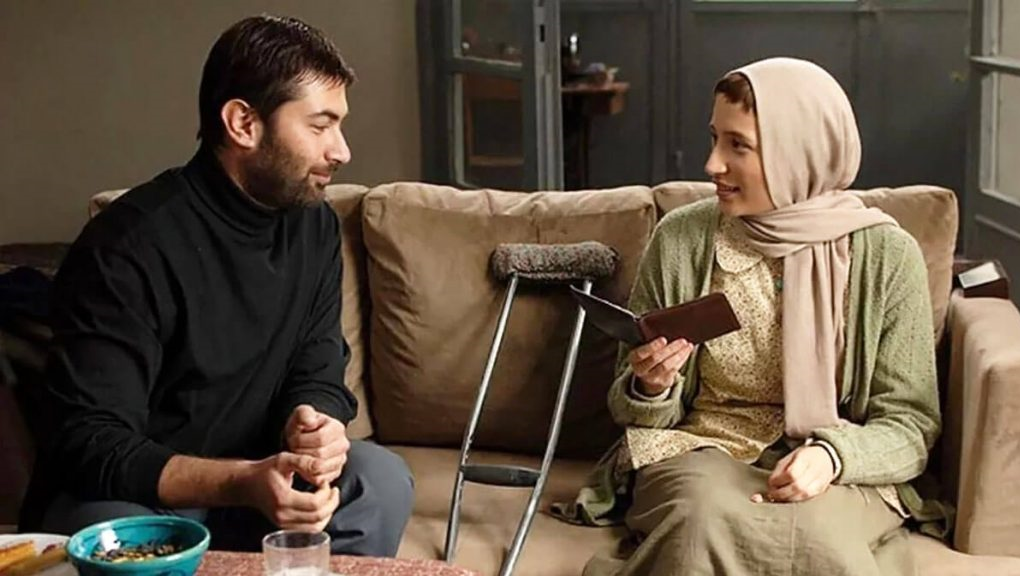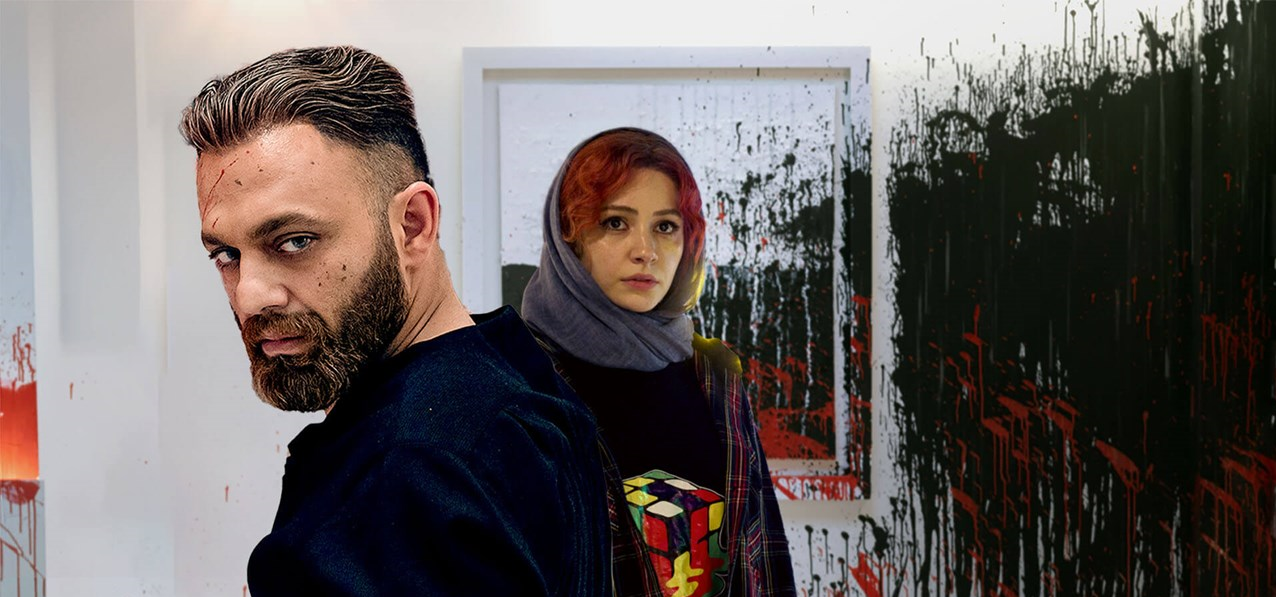A series plunged into darkness/why “Translator” could not attract the audience

Fars News Agency, Cinema Group: At the end of the year, while the home television network has not had a successful track record in producing attractive and high-profile series in the past year, the “Translator” series is one of the new productions of Namava platform, which has reached the halfway point of its broadcast. A not-so-ordinary series with intellectual gestures that tries not to find a way to the effect before attracting an audience. The “interpreter” became empty of meaning part by part and step by step and so far it has shown that, contrary to the grandiose showcase that he has arranged, he has nothing in his pocket except a thoughtful gesture.
* Is the “Translator” series an open or closed work?
After the release of the first part of the “Translator” series, Fars news agency in a short note entitled “Translator series, twisted and psychoanalytic” with a positive view of the film’s structure, emphasized the point that: “The examination of the works produced by home screening platforms shows that the general serials these years have left the path of “art” and “creativity” and have been placed in the position of “commodification”. In this process, the opposition to aesthetics and the emptying of the works of art proceeds in such a way that the serials become objects and goods among other goods and objects.
In the same report, which was published based on watching the first episode of the series, it is stated that: “The Translator” series is a complex work that activates the minds of the audience. A different and long-understood work that reveals the complexity and fragmentation of the reality of life.”
Seeing more parts of “The Translator”, not only did not confirm the theories hidden in that criticism, it even caused the author to finally come to an opinion contrary to what he had put forward and consider the translator not as an “open” and audience-oriented work, but as a ” “closed” and against the audience.
From the point of view of literary criticism and theory, we are faced with two types of works, open works and closed works. Closed works are single-meaning and direct works, and open works are plural works with multiple meanings. But in the meantime, a third flow can be added. Those are the works that become closed and meaningless due to their extreme openness. In fact, these kinds of works do not have meaning and lose their main mission, which is “the reality of the audience”. “Translator” is in such a crisis.
That is, unlike what was shown in the first episode, this series not only does not activate the mind of the audience in a creative way, but also repels the audience due to its non-aesthetic complexity.
*About the author
If the audience does not pay attention to the title “Translator”, but has seen the films “Barefoot in Heaven”, “Alien”, “Shallow Yellow Sky” and “Here Without Me” and even the satirical and pseudo-intellectual comedy “I am Diego Maradona” with Watching a few episodes of this series, one can easily see the obvious traces of “Bahram Tavakoli” in “Translator”.

A movie without me/ the work that made Bahram Tavakoli’s name known in the world
“Translator” can be considered a similar version of “Blue Whale” written by Tavakli; With the same narrative style and puzzle design, with the difference that in “Blue Whale” the story begins with Armin, but in “Translator” the story begins with Ghazaleh. In other words, unlike the previous version, now there is a girl who enters a dangerous and mafia trend in order to advance a narrative that becomes more complicated step by step, and as it was said, in this complexity, she attracts the audience more than she does. rejects The reason for this distance from the audience seems to be in the way of expression and aesthetics of the film.

In the “Interpreter” series, like most of Tawakli’s works, with the exception of “Tengeh Abu Ghraib”, “Gholamreza Takhti” and “Ruz Safar”, traces of contemporary Freudian-Lacanian psychoanalysis and existentialist ideas and concepts such as illusion and fantasy versus reality, the search for immortality and facing death It is seen as inevitable algebra.
* Characterization and content analysis of “translator”
In this part of the report, we deviate a little from the structure of the series and try to analyze the content of the characters in the story.
The nature of the story and the characters of “Translator”, from Ghazaleh, Parisa, and Nahid to Dawood, Mohdesh, and even Farzaneh, Fereshte, and Mojgan, all suffer from some kind of mental and psychological problems, they do not have mental balance, and they carry inner sadness with them. In the translator, like most of his works, Tavakli has tried to depict and imagine this inner world and create a drama from the internal conflicts of the characters with the outside world, but he has not been very successful, because the story is too much and sometimes contrary to the narrative and rational logic in the mental idioms of Ghazaleh as a character. The original is drowned so that in the sequences where Ghazaleh is not physically present, her voice is always heard as the background of the story, and it is not clear with what logic the filmmaker has placed Ghazaleh as an observer and witness to the events of the story and all the characters of the story and their moral characteristics. They are introduced to him.
A ghazaleh, as a narrator, all concepts are relative in her opinion, and the further she goes in the story, her mental values and concepts fade to the point where she is unable to distinguish between right and wrong.
Phrases such as “I doubt myself anymore” or “everything is plunged into darkness” are constantly heard from his mouth, and this means that in the filmmaker’s world, concepts have no inherent value, and the relativity of belief and the principle of moral and even religious pluralism in the geography of Moj’s story and this is the message that is instilled throughout the story to the audience, an audience that lives in an Islamic country and adheres to moral and religious values.
In fact, as much as the structure of the film is full of pseudo-enlightenment gestures and the director’s moods are pleasing, the content of the film is confused and disorganized due to the inability to express it.
In the absurd and melancholic world of his characters, where blood does not show mercy to blood and everyone is looking for personal gain, Tavakli wants to make the audience part by part by plotting the mystery of how Morteza was killed and presenting a vague picture of his character as a savior and hero. and of course we have to see what kind of person Morteza was at the end, considering the world of filmmakers, it is not unlikely that his protagonist is also an empty savior.
The filmmaker has a strange insistence that the world of the story, which is full of filth and filth with unbalanced and psychotic characters (psychosis that is not very believable for the audience because it is not properly expressed) and in reality may be similar to a small part of society. to generalize to the whole society and therefore even a reasonable character is present in the story, until Ghazaleh’s mother is also introduced as a problematic character; A mother who has always discriminated between her children and raised them with many complexes and the most important task in her life is to separate the pictures of the living from the dead!
*last word
The “Interpreter” series, contrary to its deconstructive gestures, has not been able to say anything new. This series does not satisfy the audience either in its structure, form and aesthetics, nor in its content and narration method. Neither the general audience will be very receptive to this series nor the special audience.
In this work, Tavakli has done whatever he wanted, so it is more like the exercises and exercises of the artist than a finished and complete work. Of course, the incompleteness of the work is not as an artistic technique and indicator, but based on the inability and lack of complete aesthetic mastery over the work.
In fact, such works claim that “the final word does not work for them” and it is the audience who can give meaning to the work with their creative mind. In this type of works, the author hides himself as much as possible so that the audience can enter the text. and create a new world of meanings. In the final analysis, these types of works are “audience-oriented”. That is, the text of the work is formulated in such a way that it has the possibility of generating multiple meanings.
But the “Translator” series is not only audience-oriented, but rather anti-audience. The presence of the author and the artist is so colorful that it touches the taste and does not value the audience. Therefore, it seems that not only does it not want the audience to be active, but it also ties such blind knots to the narrative and text that the audience abandons it and goes to another work. The main reason is the lack of the possibility of generating meanings and associations in the text of the work.
end of message/


